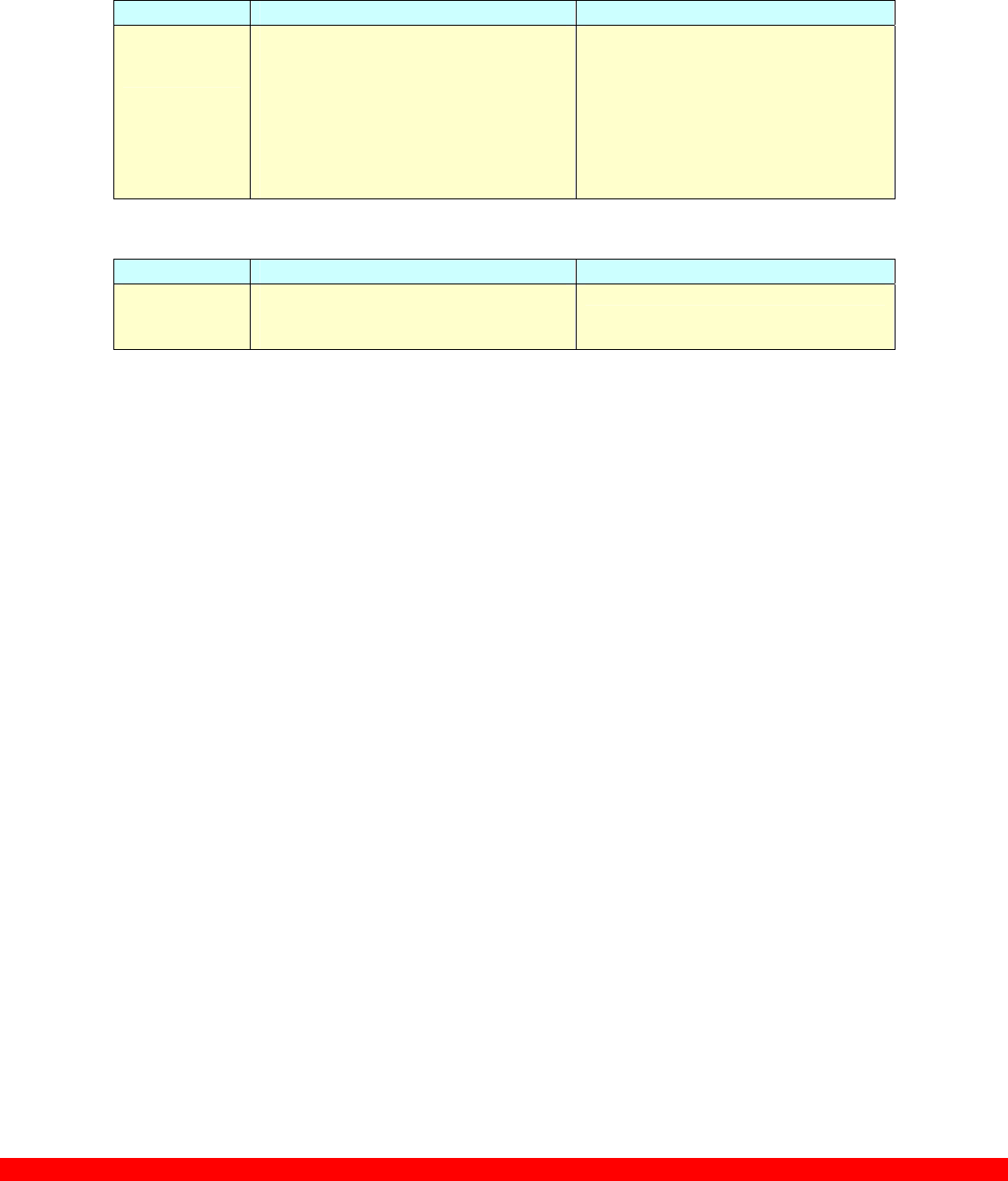
Xerox Nuvera
®
100/120/144 EA Digital Production System - Customer Expectations Document
- 31 -
Print From Digital File
Configuration Re-print Job Formats (from DVD/CD) Comments
Digital
Production
System
• Single TIFF
• Multi-page TIFF
• PPML
• PCL
• PostScript
• PDF
• Saved Single Page TIFF
• ASCII
− Saved Single Page TIFF file is the Save
operation performed in FreeFlow™
DocuSP® when selected to save as
single TIFF. This file contains PostScript
that will require PostScript license to print
the file.
Scan to Digital File
Configuration Save Job Formats Comments
Digital
Production
System
• Multi-Page TIFF
• PDF
• Single Page TIFF
- PDF printing requires PostScript license
Saving jobs
Jobs submitted electronically, either over the network or via media, can be saved.
• Both the “ripped” (Raster Image Processed) image and the job ticket will be saved.
• Ethernet license must be enabled in order to save job as PDF.
• Set up Instructions for Scan To File with NFS (Network File System) can be found in the Xerox
Nuvera
®
Digital Production Systems Hints & Tips.
Productivity Impacts
There are several factors that can affect the performance of the system RIP speed when processing print jobs.
The following is a list of common situations that negatively can impact throughput.
• The default print resolution of the system is 1200 dpi. 600 dpi printing may be adequate for your needs, so
you can try setting that resolution to improve RIP performance of complex 1200 dpi jobs. 1200 dpi results
in 4 times the internal image data of a comparable 600 dpi image that has to be transferred through the
system. When the print resolution is changed from 1200 to 600 dpi, the stroke thickening value may also
need to be changed from 1 to 0 to avoid excessive line thickening.
• It is common to embed logos and watermarks in submitted print files. These are typically bitmap images
that when embedded in a print stream (such as PostScript) can take a long time to process. Note also that
resolution selections (e.g. 600 dpi vs. 1200 dpi) can have a significant further impact to processing of
these types of embedded images. Consider the design of documents and impacts to printing speed in
such cases. There are methods available, through PostScript for example, to cache these embedded
images, process them once, and retain them as a resource for application on each page without having to
render and scale them for each page. Refer to your PostScript reference manuals and DocuSP®
reference manuals for information about caching.
• Submission of multiple TIFF images simultaneously is a common application. There are several batch
printing tools available on the market that enable this and most require the selection of a print driver for the
target printer that these images files are submitted through. In these cases, the TIFF files are converted to
a Printer Description Language (PDL, such as PostScript) by the batch tool by using the printer driver and
then submitted to the printer, which in turn RIP that PDL and re-render the TIFF bitmap images back into
bitmaps. This is an inefficient process and can significantly slow the machine down. Xerox Nuvera
®
includes a native TIFF interpreter and it can process TIFF files sent to it directly. Some of the batch tools
on the market support a native TIFF submission capability. It may be referred to as a bypass mode or


















